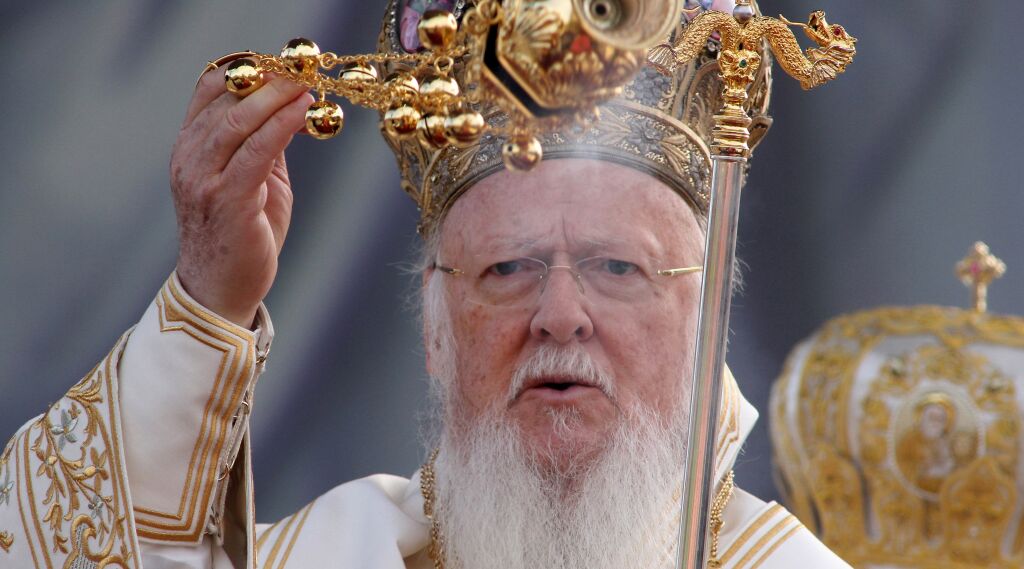
‘So That They May Be One’
Unity. That is the theme of Pope Francis’s upcoming trip to the Holy Land. On May 24, the pope will arrive in the Middle East for a two-day whirlwind trip that will span Israel, including a visit to the West Bank, and Jordan. The trip will coincide with a visit from the Orthodox patriarch of Constantinople, Bartholomew i.
The theme of the journey—what it commemorates—and who will be in attendance both speak volumes for the strengthening relationship between Roman Catholicism and Eastern Orthodoxy.
The trip is planned to commemorate the 50th anniversary of a meeting between Pope Paul vi and Patriarch Athenagoras i. That important meeting was a serious step toward healing age-old divisions between the rival faiths. In that 1964 meeting, the two religious leaders expressed regret at the “reprehensible gestures” that took place at the time of the great schism between east and west in 1054. Those gestures were the excommunications that both groups served to one another. Pope Paul vi and Patriarch Athenagoras i rendered these excommunications null and void during their meeting. This was a massive step toward unifying the two faiths.
With unity evidently heavy on Pope Francis’s mind at the moment, the 50th anniversary of such a momentous step in the healing of relations is the perfect opportunity for him to foster similar steps toward reuniting with Rome’s wayward sister in the east.
The motto of Francis’s meeting will be “So that they may be one,” and it will be accompanied by a logo depicting an embrace between St. Peter and St. Andrew—the patrons of the Roman Catholic and Eastern Orthodox churches.
Bartholomew’s trip to Rome showed how well suited Francis was to continue the work of reconciliation between the two faiths. Francis has a history of merging Roman Catholic and Eastern Orthodox practices. According to the Associated Press, “Francis is familiar with Orthodox traditions from 14 years of heading the Argentine church’s commission on Eastern Rite Christians, which is within the Catholic fold but follows Orthodox religious customs, including some married clergy in lower ranks.”
Long before Francis came to power, unification has been looming. Representatives of the two religions met in Italy on Oct. 13, 2007, to draft a document declaring that the pope historically had primacy over all Catholic and Orthodox bishops. Since that time, progress has been made, step-by-step, to bring the two groups together.
Now the two leaders are meeting again embarking on a new campaign for unity. But what sort of unity can be expected to spring from the steps of reconciliation? Will it be a meet-in-the-middle-type of reconciliation? Or are we about to see a more profound reunification?
Herbert W. Armstrong explained exactly what was changing on the world scene. He saw who would reconcile to whom. It would not be Catholicism meeting halfway with the Eastern Orthodox, but the Orthodox rejoining the Roman Catholics! The November 1963 Plain Truth states:
The final—albeit short-lived—triumph of Catholicism is recorded in literally dozens of Bible prophecies. Right now—whether we want to believe it or not—the stage is being set for the greatest revolution in religion the world has witnessed. … The mighty problem of achieving unity is two-fold. First, it involves reconciliation of the Orthodox Schism that officially commenced in 1054 and divided the churches in the east.
In December 2008, Bartholomew i met with Cardinal Walter Kasper, president of the Pontifical Council for Promoting Christian Unity. The two agreed that Catholic-Orthodox union was the only solution to the world’s economic, political and social crises.
But is such a union—fostered by meetings such as the one in Jerusalem next month—really bringing about a positive solution to the crises we face today? Our booklet He was Right states:
In the end, this coming reconciliation between the Vatican and its protesting daughters will not usher in the peace mankind so desperately desires: just the opposite! It will bring about the fulfillment of the great prophecies of Revelation 13. These prophecies speak of a universalist religion that imposes its will upon the Earth with crusading power. It will enforce a social contract that dictates not only who will work but who will eat! (Revelation 13:15-16).
For well over 50 years, Herbert Armstrong prophesied of this great religious power and its coming global dominance. But he looked beyond the great time of trial this religious power and the empire it leads will bring to this world. He prophesied of another empire—an empire that will soon overcome all other imperial and religious forces to finally impose justice on all mankind—the very Kingdom of God under the divine rule of the Author of pure religion, the living Jesus Christ!
For more information on Rome’s path to reconciliation and where it will end, read the section in He was Right titled “Returning to the Fold.”
